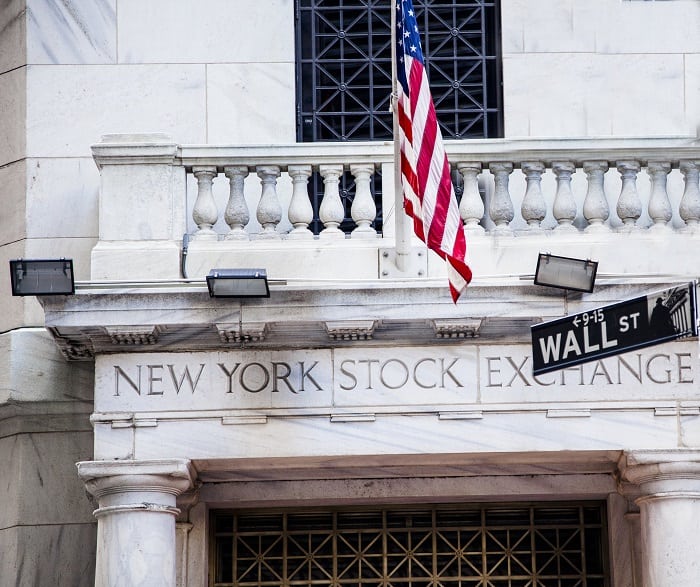The sudden ignition of a global market sell-off did not come as a surprise to most investors and analysts.
Volatility had been creeping up since the start of the year, with the Vix hitting a five-month high toward the close of January. On Tuesday, the fear index spiked some 116% higher to 37.32.
It’s perhaps more accurate to say that the timing has caught some by surprise. Judging from the vast majority of outlook breakfasts and roundtable discussions I attended in December and into January, most investment teams weren’t counting on a major market hiccup until some time in the second half of the year.
This of course assumes that this correction is the big one and not merely a wobble, a point which investors still seem split on.
It’s a bird, it’s a plane …
“This is quite normal,” states Gary Potter, co-head of the BMO Global Asset Management multi-manager team, commenting on this week’s market movements.
“I’ve been around 35 years, markets go up and markets go down,” he continues. “More often than not markets go up more so than they go down but when they do it can be short and sharp. Fundamentally we’re not facing a recession in any of the major economies. We have currently got the most synchronised global expansion and that’s why the bond yield is slightly jittery in terms of its recent rise and that’s why you are seeing valuations compromised and stock prices give back a bit, if only for that reason.”
As Steven Andrew, multi-asset fund manager at M&G Investments, notes, the “contagion to other markets suggests a degree of more generic ‘risk-off’ behaviour. The fact that European bonds have rallied when the apparent concern is rising global rates suggests some inconsistency in the prevailing narrative.”
“One week doesn’t make a bear market, but it’s the first sign of rising yields tempering investors’ enthusiasm elsewhere,” says Emiel van den Heiligenberg, Legal & General Asset Management’s head of asset allocation.
He views the current situation as analogous to the Taper Tantrum of 2013, when bond markets similarly sparked a broader sell-off following an indication the Federal Reserve might scale back its asset purchases.
“That episode ultimately proved a buying opportunity for the asset classes hardest hit,” van den Heiligenberg points out.
However, Nick Dixon, investment director at Aegon, is opting for a more cautious interpretation of this week’s stock market shifts. Looking just at the US, he argues that things are far from peachy, noting that “tech companies have driven much of the index growth since 2009,” price to earnings (P/E) ratios “look unsustainably high” and there is still the possibility US rates will rise faster than many expect “reducing the amount of money which has been awash in the markets”.
“It has been our view for a while that exposure to US markets in particular should have been reduced,” he says.
“Further, in the context of richly valued equity markets and low yields on fixed income, cash has looked relatively attractive, especially for more conservative investors. Nothing we have seen in recent days has changed our view.”
The unusual thing about this correction/wobble/whatever you want to call it is that as Ben Yearsley, director of Shore Financial Planning, notes, “it has been driven by positive rather than negative news!” Namely, “markets are in a tizz about interest rates increasing more quickly than expected in the US in 2018”.
However, Yearsley argues this technical noise doesn’t match the fundamentals story.
“Companies in the US are in decent shape, however, no one can deny that valuations aren’t a bit stretched at the moment. On the plus side President Trump’s corporate tax cutting has underpinned much of last year’s market growth.
“Here in the UK even before the last few days, the FTSE had pulled back a bit driven by sterling strength. Don’t forget that over 70% of FTSE 100 earnings are derived overseas, so when sterling strengthens those earnings are worse less.”
“Investors shouldn’t panic,” Yearsley stresses, “the worst thing to do is to sell out after the event”.
How investors reacted
In response to Tuesday’s excitement, Potter removed some put options from the F&C multi-manager funds on the day, but he was not tempted to tamper with his existing portfolio holdings.
“The reason you have futures in your portfolio is to put them on and take them off when things like this happen,” he explains. “What we don’t want to do is disturb out portfolio. We don’t want to sell funds that we really like for the long-term and where there is perhaps a capacity such that if we sell them, we can’t get back in them.”
The suggestion that non-fundamental drivers are at play in this week’s traumatic market moves is why M&G’s Andrew says his “predisposition would be to add equity exposure”.
“We think it’s technical noise, rather than fundamental change, leading to a taper tantrum on repeat,” agrees Michel Perera, Canaccord Genuity Wealth Management CIO. “Stay invested and, if you have idle cash, use it,” he says.
After all that noise and excitement, Gary Waite, Walker Crips IM portfolio manager, says it is still “too early to take drastic action”.
“Our portfolios have been defensively positioned within their respective risk categories for some time as we’ve been expecting a market retreat, given the record-breaking run of the US S&P 500 and the elevated levels of global markets in general. We are not aggressively ‘buying the dip’ as we expect the volatility in the short term to continue and our focus at this stage of the market is capital preservation, rather than marginal return.”
Whether this week’s noise culminates in a full-blown correction or a brief interruption in the risk asset rally, investors can agree on one thing – don’t panic, make sure you’re protected and if you have cash, use it.











